Aswan “The Nubian City”, A Beauty to Explore
There are many cities in Egypt but only the city of Aswan can reflect the great heritage and Egyptian culture. It is located in Upper Egypt; 220 km south of Luxor and 890 km south of Cairo on the foot of the Nile valley. It is considered one of the most beautiful tourist cities in Egypt. It is one of the most important destinations that tourists come to from all over the world every year.
Aswan is the sunniest southern city in Egypt and it is known for its distinctively African atmosphere. It has also a gorgeous winter climate; and is a popular sun resort from November through to March with Egyptians as well as international holidaymakers. Although it is a small city, it is graced with an incredibly beautiful setting on the Nile. Some say that you haven’t seen the great Egyptian Nile until you’ve gone to Aswan because although it doesn’t have the number of great ancient monuments located in Luxor, it does still have some of the most picturesque ancient and modern monuments making it among the list of the top-visited cities in Egypt.
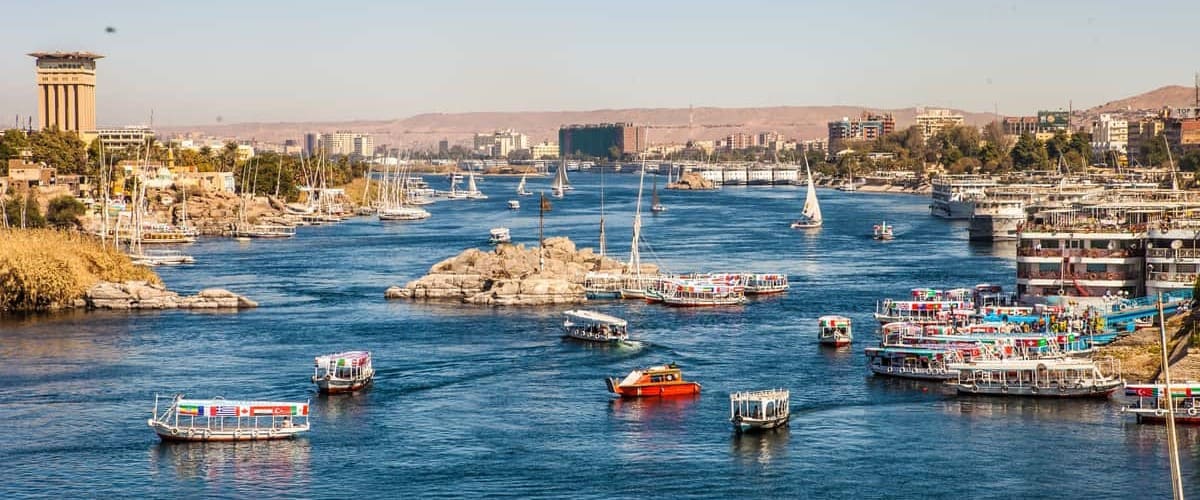
The city’s geographical nature has changed in certain locations because of the construction of the Aswan High Dam. The construction led to the near flooding and destruction of many temples like Abu Simbel and Philae in the 60s. But UNESCO saved the temples and transported them to a new location in one of the hardest challenging rescue missions in modern architectural history. Even to our current day, the city is miraculously able to attract people’s attention. Along the banks of the city, you will find really friendly people. They welcome visitors from all around the world warmly to the colorful tapestry of history, tradition, and culture. In Aswan, you will also enjoy the amazing beauty of the Nubian culture and the bewitching relics of ancient Egypt.
Aswan has always been a city of great importance. It considered being a central market although it’s the smallest of the three tourist cities on the Nile. It acted also as the Ancient Egyptian’s gateway to Africa and home to the Nubian culture in Egypt. Aswan has always played a role in the history of Egypt since the date of its creation; as it was the main source of precious building materials like limestone, quartzite, and Granite due to its rich habitat. During Egypt’s colonial era, Aswan was a staging ground for Anglo-Egyptian forces heading south to quell unrest in Sudan. Despite all of this, the real centerpiece of Aswan is the beauty of the river and the Nubian people.
The Best Tourist Attractions Of Aswan
Aswan is characterized by a large number of tourist places that have gained wide fame; especially those located on the banks of the Nile, such as:
The Unfinished Obelisk
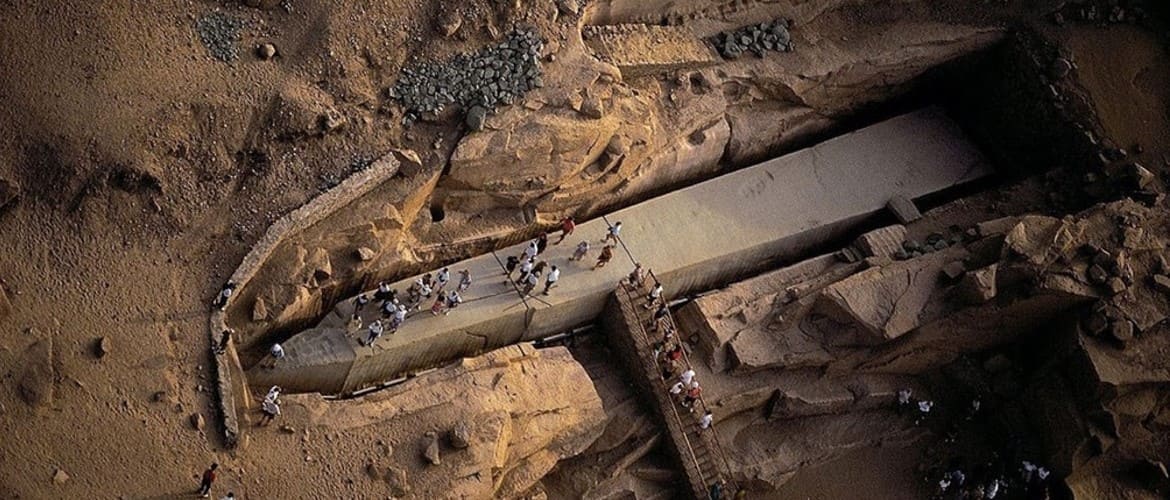
One of the unforgettable attractions of Aswan is the majestic Unfinished Obelisk. It is without a doubt the largest obelisk ever constructed. But unfortunately, it was uncompleted due to the discovery of numerous cracks in it. The obelisk was built in a very unique manner as it depended on a Greek style of architecture. Queen Hatshepsut, the Wife of King Thutmose II (1478-1458 B.C), built it in the new kingdom during the 18th dynasty to place it in the Karnak Temple and to complement the Lateran Obelisk, originally in Karnak but later moved to Rome. It is located in its original location a granite quarry in Aswan. And it would have measured 42 m making it the tallest obelisk in history. The obelisk would also have been the heaviest obelisk weighing 1200 tons.
Aswan High Dam
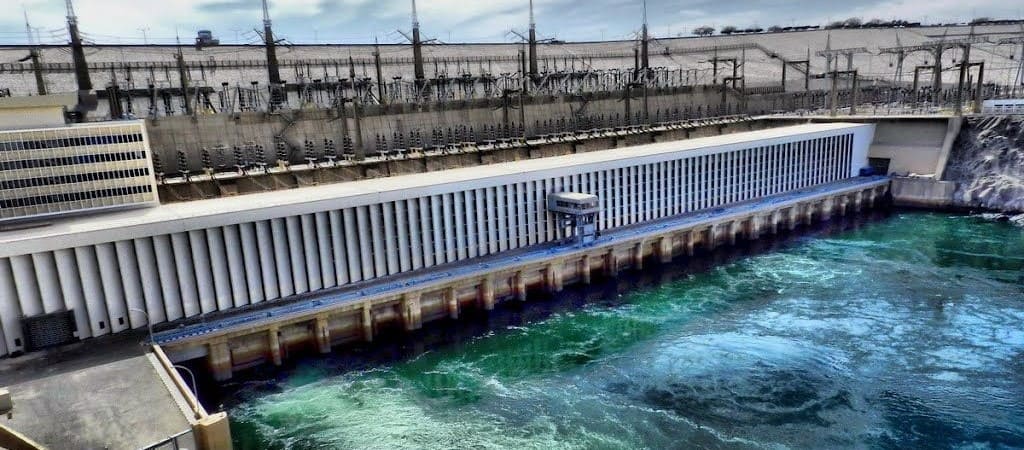
Aswan High Dam is one of the most important tourist attractions that cannot be missed during a visit to Aswan. It is located near the second Nile cataract near the city of Aswan. President Gamal Abdel Nasser started its construction in 1960 with the total support of the Soviet Union. Its great importance is depicted in the hydropower it generates which provides 2.1 gigawatts; that was about half of the needs in Egypt in 1970. The construction of Aswan High Dam gave numerous villages access to electricity for the first time; in addition to eliminating the danger of floods downstream in the Nile Valley.
Philae Temple
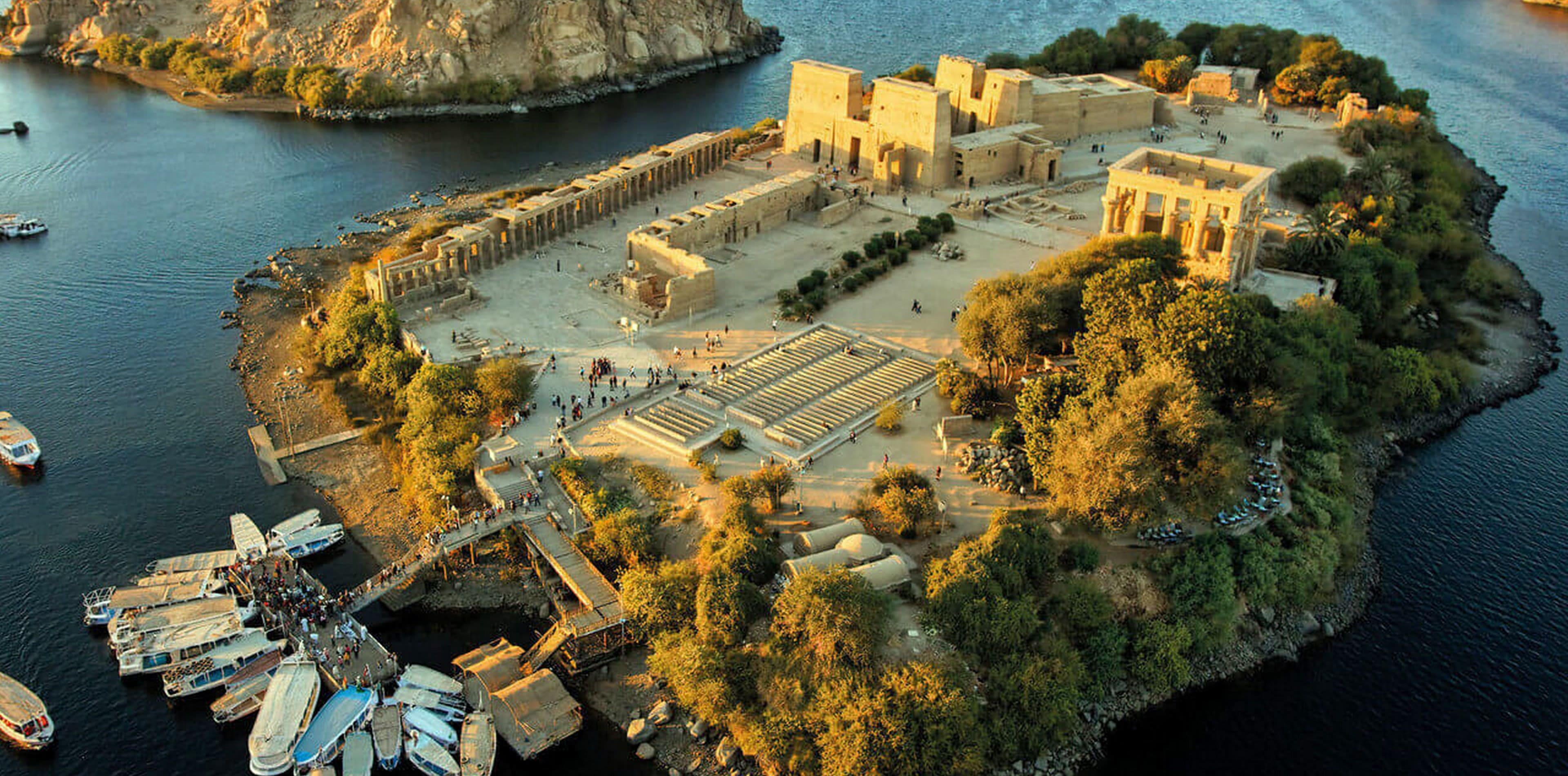
Philae Temple Complex is one of the most picturesque temples in all of Egypt. The Ancient Egyptians built it for the goddess Isis, the wife of Osiris and mother of Horus. It was built on Philae Island but it was relocated to Agilkia Island between 1972 and 1980 as part of the UNESCO Nubia Campaign project; to protect it from the inevitable sinking after the construction of the High Dam. It is considered by many to be the last of the ancient temples in the classical Egyptian style. There is a sound and light show at Philae Temple, like at all of the other major ancient attractions in Egypt, but Philae is generally thought to be the most impressive of these often overblown affairs.
Abu Simbel Temple
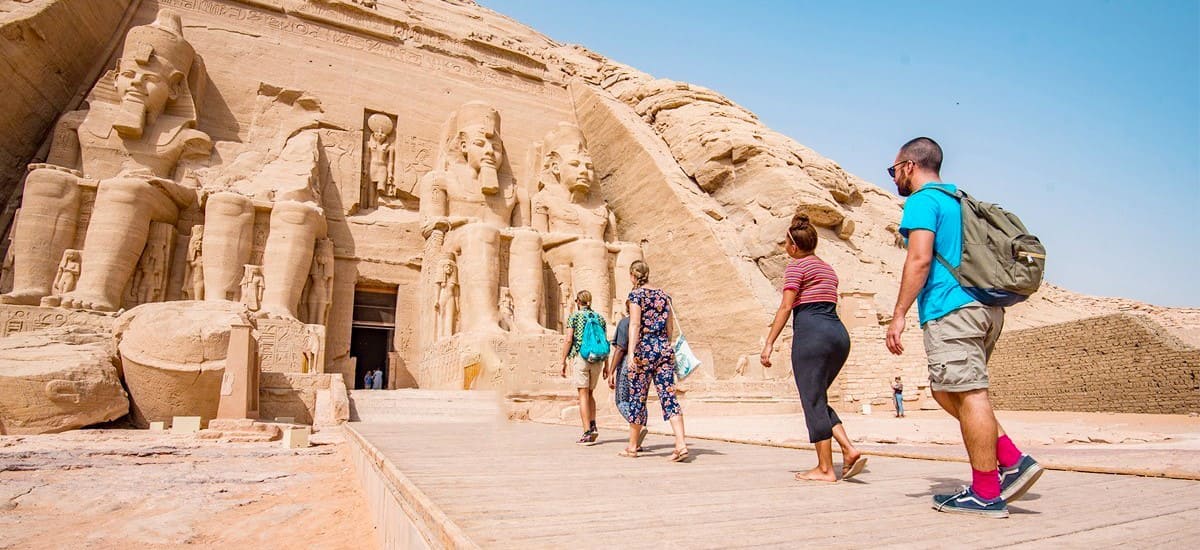
Abu Simbel is undisputedly one of the world’s most breathtaking and oldest monuments and Egypt’s most visited tourist site. It is located on the western side of Lake Nasser. King Ramses II built it in 1244 BC and took about 21 years to complete. The temple relocated in 1968 with the support of UNESCO to its current location because it was under threat from the rising of the water of the Nile, which was caused by the construction of the Aswan High Dam. It consists also of two temples, one dedicated to Amun, Ptah, and Re-Harakty, and belongs to King Ramses II, and the other is dedicated to the goddess Hathor and belongs to his wife Nefertari. Every year, one of the strangest phenomena known to mankind, which thousands of tourists come to watch as the sun perpendicular to the face of the statue of Ramses II, occurs.
Kom Ombo Temple
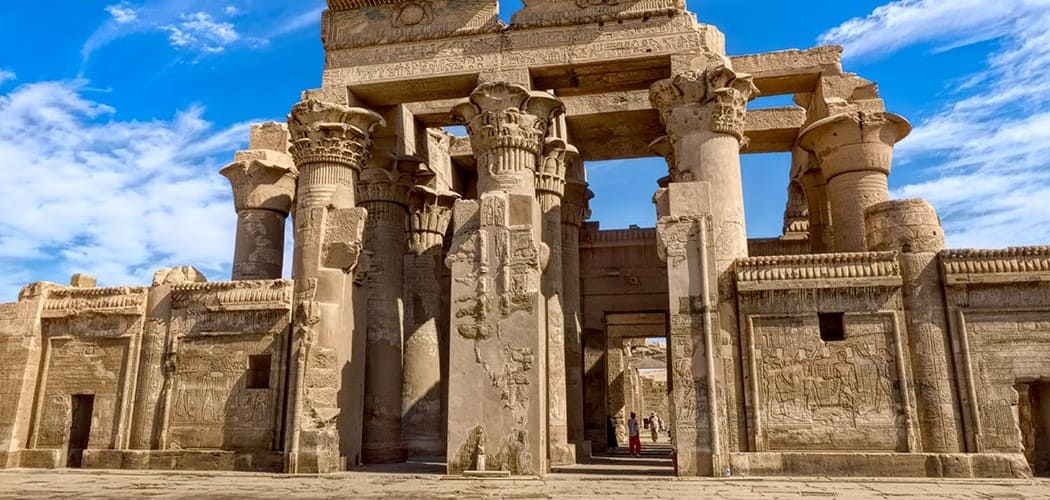
Kom Ombo Temple is one of the most unique temples in Aswan and probably in Egypt. The Ptolemaic dynasty constructed it during the Greco-Roman Period. It is located East side of the Nile River in the town of Kom Ombo, 48 km north of Aswan. Kom Ombo temple is considered to be highly specialized and also one of a kind as it’s a double-designed temple. As a result, it divided into two identical sectors; the left side was dedicated to the worship of Horus who was the falcon-headed sky god, and the right to Sobek, the crocodile-headed god. While being there, you will be able to see some mummified crocodiles, some amazing reliefs of the walls of the temples, and clay coffins. Along with Esna and Edfu, Kom Ombo is the third major stop that most of the Nile cruises between Luxor and Aswan make on their journey.
Edfu Temple
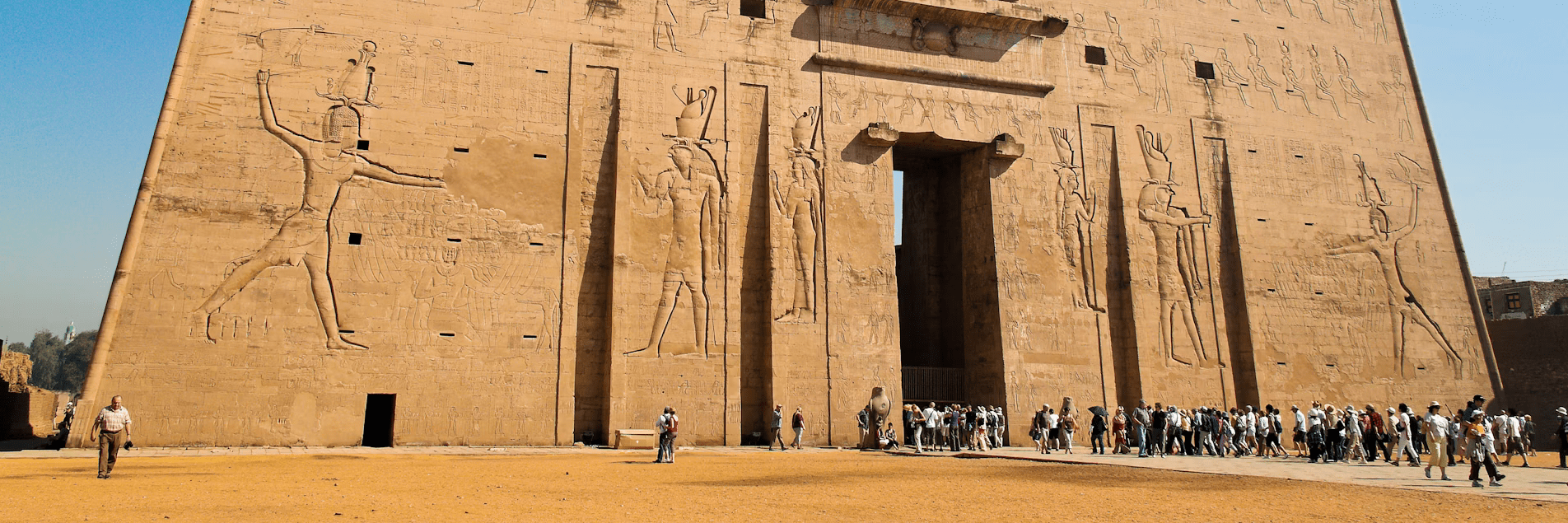
Edfu Temple is the most preserved cult temple in Egypt. It was built during the Ptolemaic Kingdom between 237 and 57 BC to be a worship house of the sky deity Horus. The Temple is the second-largest temple in Egypt after the Karnak temple. It was one of the last attempts by the Ptolemaic dynasty at the building in the style and grandeur of their predecessors. The temple is located in Edfu on the west bank of the Nile River, halfway between Luxor and Aswan. It was also built along with several other notable temples, including Dendera, Esna, Kom Ombo, and Philae. It is highly important as it perfectly reflects the Ptolemaic culture with the Ancient Egyptian Pharaonic culture. The inscriptions on its walls were able to provide useful information on the religion, language, and myth during the Hellenistic period in Egypt.
Kalabsha Temple
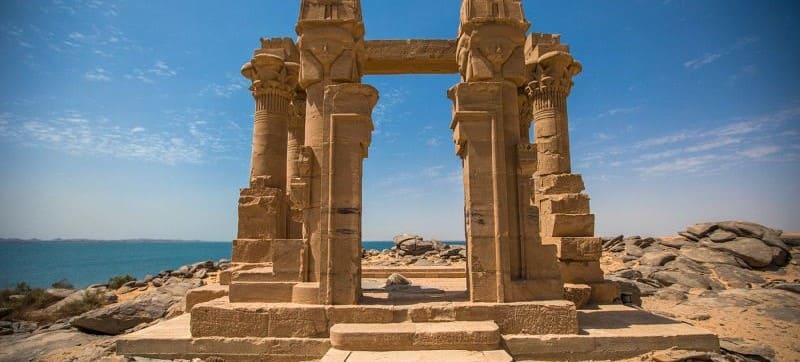
Kalabsha Temple is the youngest preserved temple in Aswan. It dates back to the reign of the Roman Emperor Augustus and was built to honor Merwel or Mandulis, the Nubian solar god. It is situated on an island in Lake Nasser about 11 miles from Aswan. The original temple was located approximately 30 miles away at Talmis but moved to its current site after the building of the dam. Within the temple, you’ll discover a pylon, an open court, a hallway, vestibules, and a sanctuary. There’s also a nilometer, that the Egyptians used to measure water levels and several chapels on the site.
Tombs of the Nobles
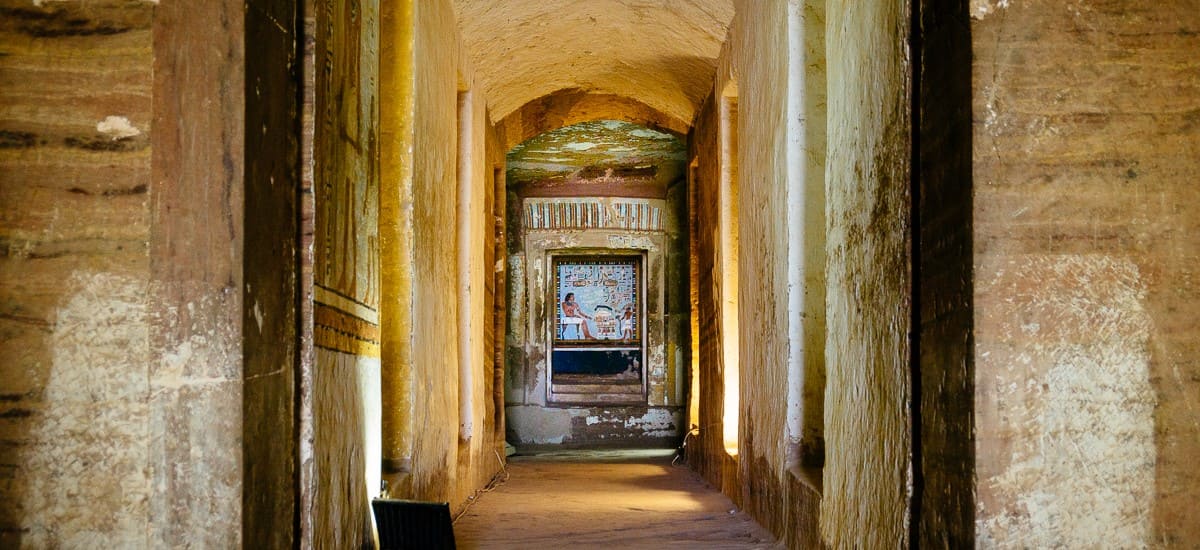
The Tombs of the Nobles are situated near the West Bank of Aswan at the northern edge of Elephantine Island; also called the tombs of Qubit El Hawa. The British archeologist Lord Greenville discovered them between 1885 and 1886. They are of significant importance as they give us the chance to know about the history of this section of Egypt during the Old and Middle Kingdoms. They were the burial destination of the majority of the Elephantine Island’s governors, grandees, and priests such as Mekhu, Sabni, Prince Sarenput III, Harhuf, Amenemhet II, and Setka. The wall paintings inside the Tombs of the Nobles are wonderfully alive. They display also the daily life activities of the ancient Egyptians in a magnificent masterpiece of art.
Nubian Museum
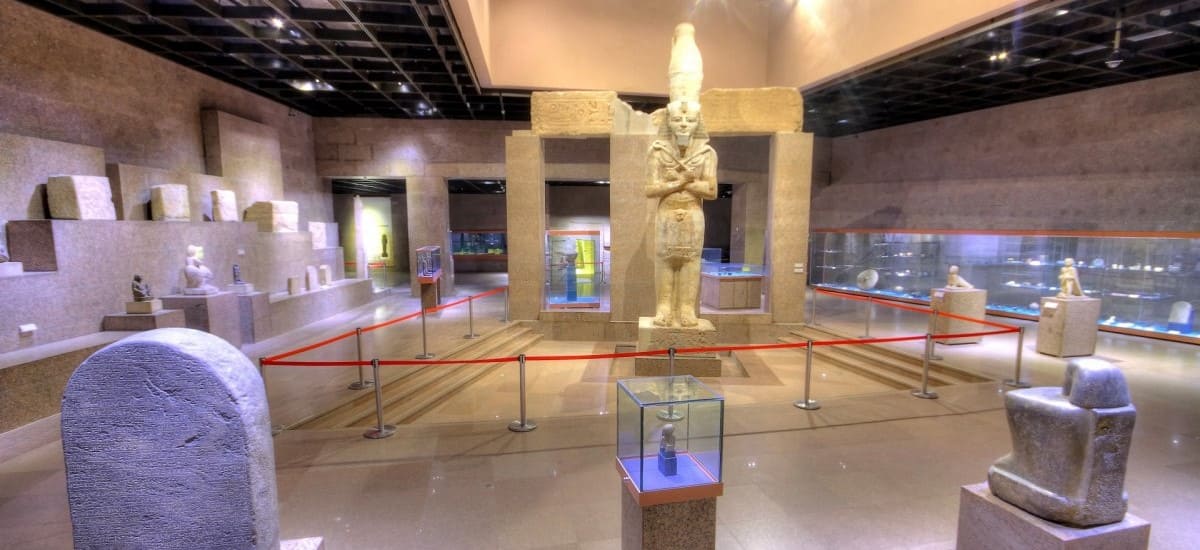
The Nubian Museum is a great Nubian Attraction that combines both ancient & modern culture. It is located in the southern part of Aswan. UNESCO opened it in 1997 to be a place that includes antiques as well as wonderful collectibles belonging to different eras. The museum displays the ancient Egyptian and Nubian antiquities that were rescued from the waters of the Nile and those that were discovered during operations. It also displays the Nubian language, customs, and traditions of the Nubians.
Nubian Villages
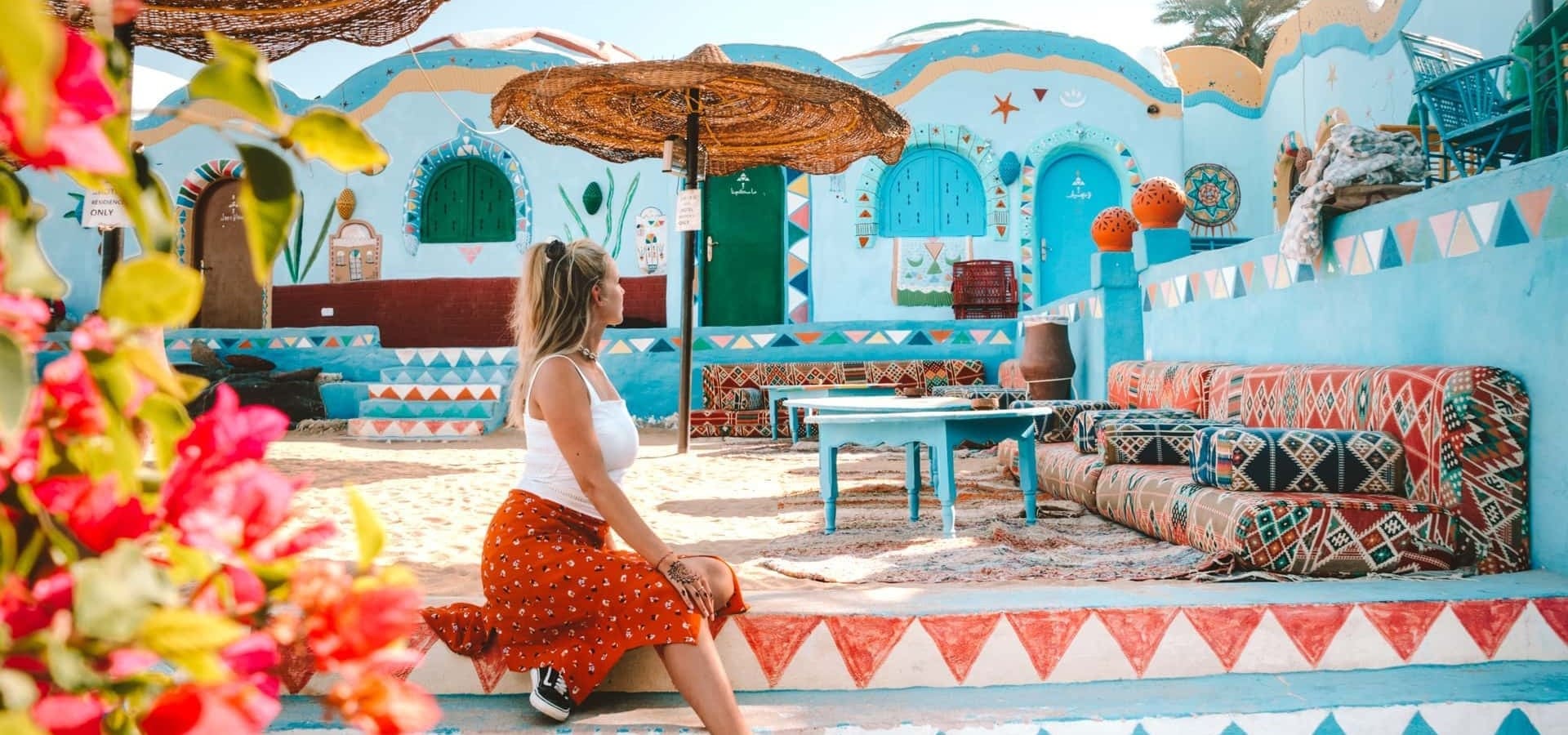
Deep down on the West Bank of the Nile, about 3 miles south of Aswan, are the most colorful villages of the entire country. The Nubian Villages are such a cheerful sight for being painted with bright colors; and inhabited by Nubians. They speak their Nubian Languages and have specific traditions that are different from the rest of Egypt. They are so friendly and great hospitality will be waiting for you in one of the Nubian family houses which are made of mud. There is much to do in this village; such as shopping in the Nubian shops where you can buy Nubian accessories, clothes, and some rare spices. You can also wander around, explore, and admire all the beautifully painted rainbow buildings. There are also a few restaurants and cafes with colorful courtyards overlooking the Nile if you want to sit and relax.
Elephantine Island
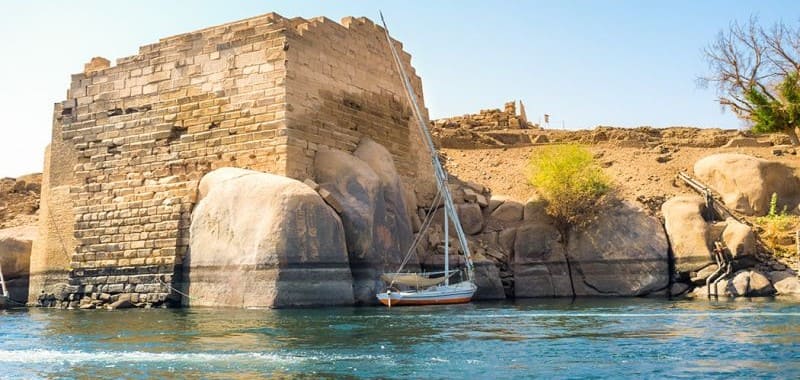
Elephantine Island is one of the major Aswan attractions floating on the Nile. It is located on the western side of the Nile River. Elephantine Island is considered one of the most beautiful tourist places in Aswan, because of its palm trees and gorgeous colorful houses. The island includes a large number of resorts, parks, restaurants, as well as cafes overlooking the Nile River. It is also full of archaeological sites and ancient monumental ruins ready to be discovered. One of the most important features of the island that you must visit is the Aswan Museum. It is located at the southern end of this island and was opened to the public in 1912 AD; displaying Nubian artifacts and objects found on the island itself. Another famous attraction in Elephantine is the Nilometer which was built to measure the Nile’s water levels during the annual flood.
The Mausoleum of Aga Khan
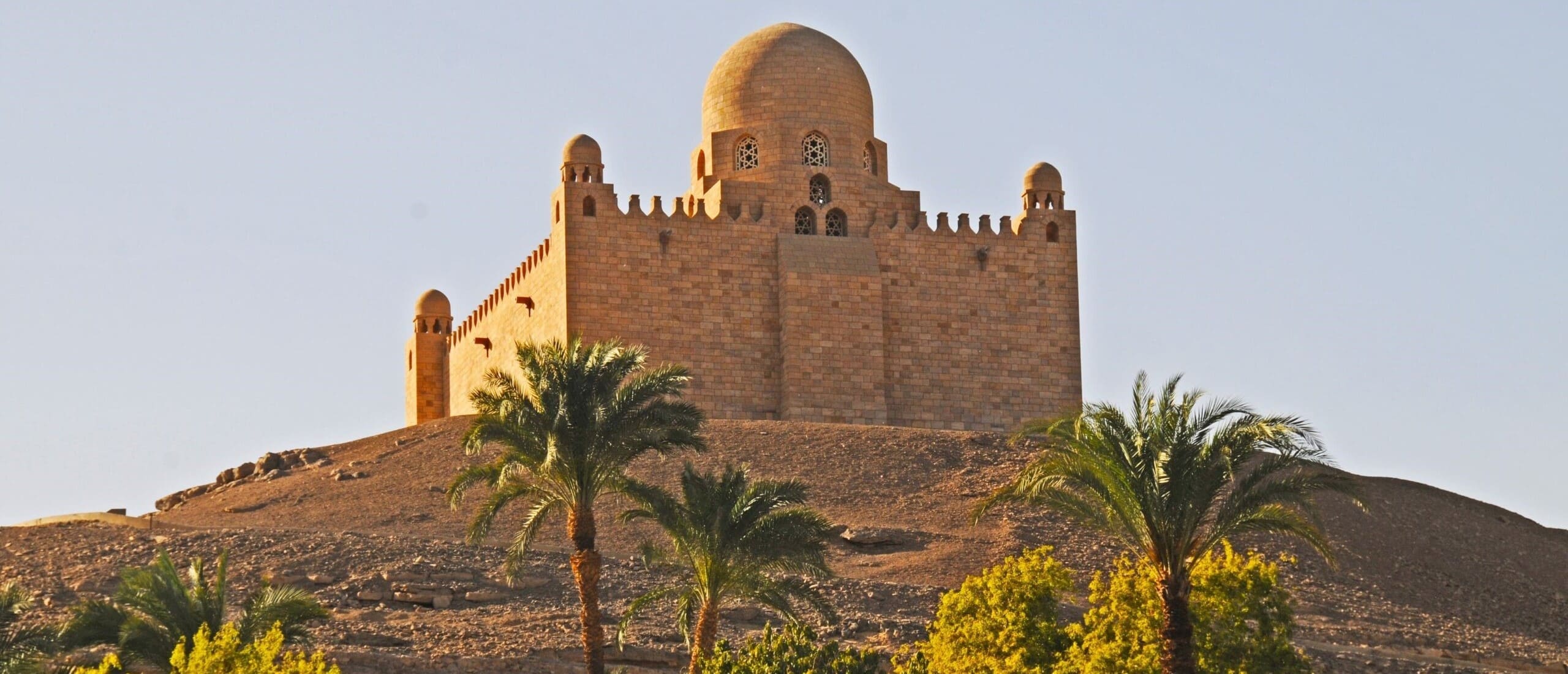
The Mausoleum of Aga Khan is one of the important landmarks of Aswan Egypt. It is the mausoleum of Sir Sultan Mohammed Shah, who died in 1957. He was the spiritual leader of the Ismailis Sect in India and one of the richest men in the world. The Mausoleum is located at Aswan along the Nile of Egypt. Its construction began in 1956 and ended in 1960. It is made out of granite. And it is considered a very elegant pink granite structure of late 1950 origin; which also resembles the Fatimid tombs in Cairo.
Botanical Garden ”Kitchener Island”
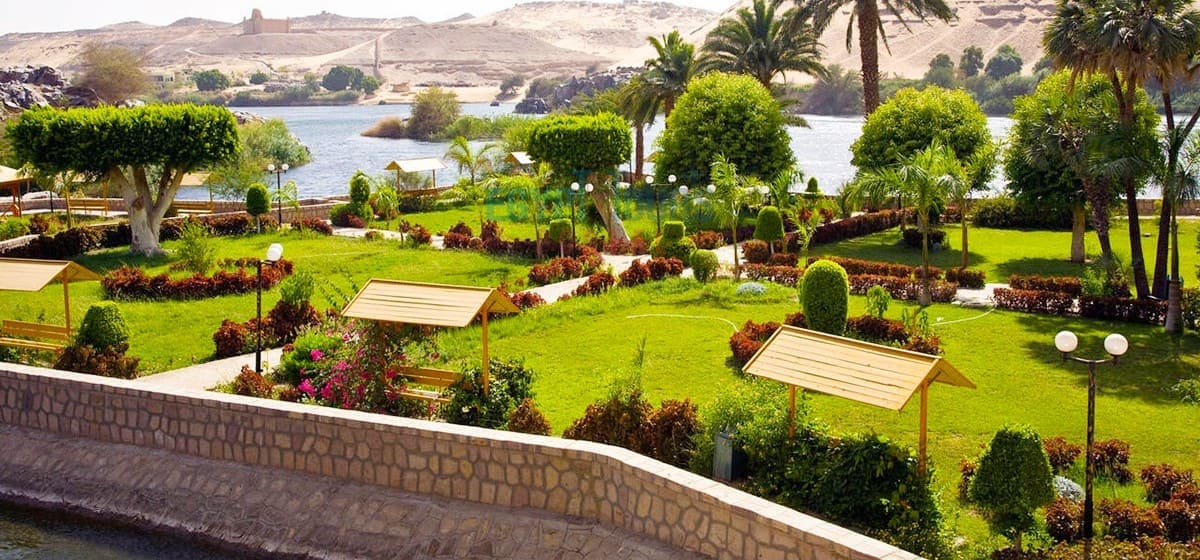
Kitchener Island, after Lord Kitchener, who owned it in the early 2000s and turned it into a botanical garden in 1928, is one of the most beautiful tourist places in Aswan. It is located in the reservoir of the old dam of Aswan next to the big island Elephantine. It is filled with all kinds of rare plants and trees in the world and due to the importance of the island and its wide fame, many world-famous personalities have visited it, such as Queen Elizabeth and “Nehru” Prime Minister of India.
Ferial Garden
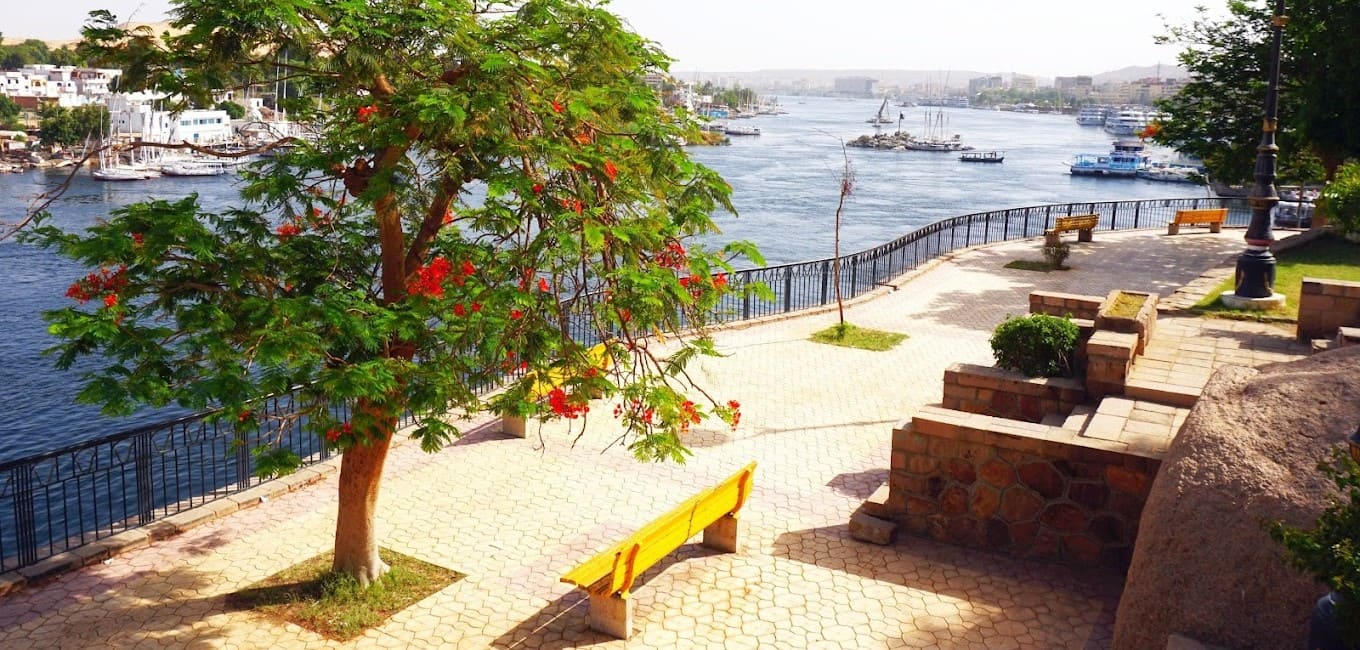
Ferial Garden is located in the middle of the city. It is a very attractive tourist attraction that has emphatic views along the River Nile from both directions. This really interesting site was established under the patronage of Queen Ferial who was the daughter of King Farouk. The design of the park is unique and unrivaled making it an important tourist spot in Aswan. Tourists also come from all around the world to enjoy its authentic panorama of the immortal Nile River.
El-Tabia Mosque
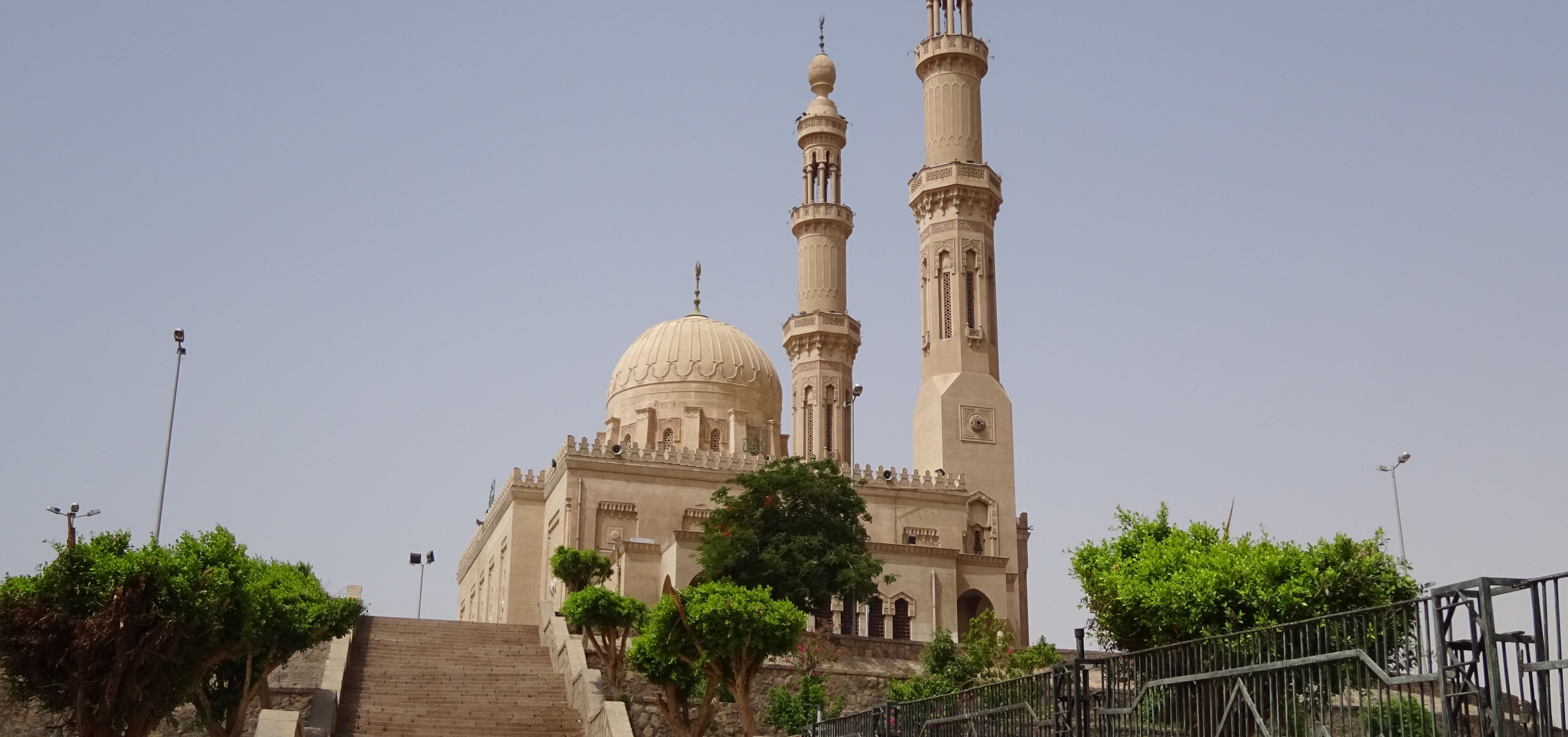
El-Tabia Mosque is one of the oldest and largest mosques in Aswan. It attracts large numbers of tourists and greatly stimulates tourism in Aswan. It was designed with some beautiful decorations inside and out that belong to the Mamluk era. The Mosque has a distinct architectural style. It is called “The Fortress” because it was constructed at the top of a hill in the central part of the city where the great Muhammed Ali Pasha built his fortress overlooking the Nile.
If you are looking for the best day tours that you can do in Aswan; then we are providing various Aswan day tours to the best attractions in the Nubian city. Get the chance and book us now